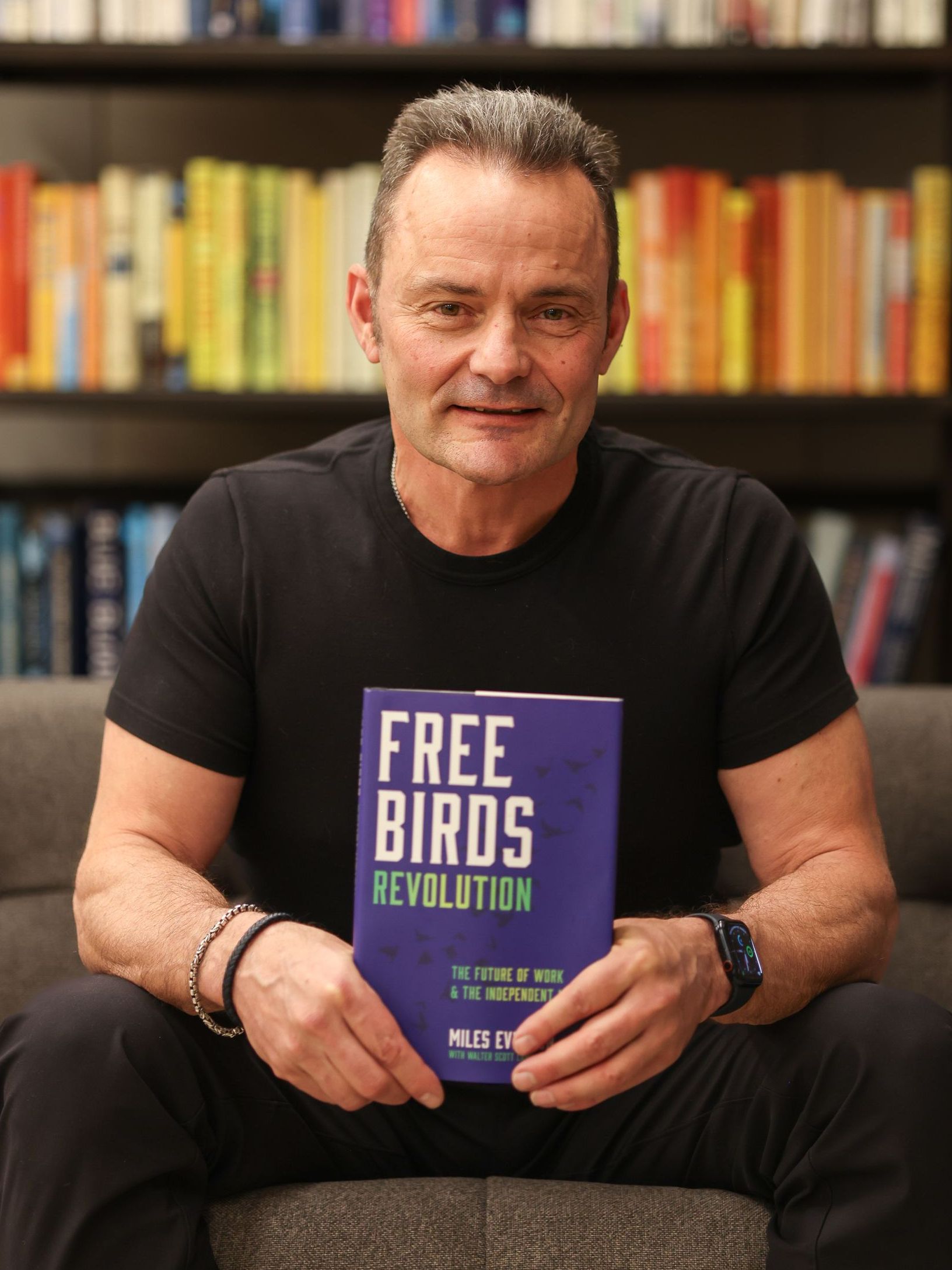Can the most hated industry of 2008 be one of the safest bets of 2025?
|
|
| Let’s talk about the mortgage industry for this article. Read on to better understand what Professor Litman is saying about this subject. Can the most hated industry of 2008 be one of the safest bets of 2025? In the world of finance and investing, some calamities start not with fire and brimstone, but with ambition. A desire to be the best. A relentless push toward growth. The pursuit of market dominance at all costs. In the early 2000s, that pursuit quietly laid the groundwork for one of the most devastating economic collapses in modern history. Fast forward 15 years, and according to Professor Joel Litman —Chairman and CEO of Valens Research and Chief Investment Officer at Altimetry Financial Research —the very same sector that once helped spark the Great Recession may be quietly transforming into an attractive opportunity for investors bold enough to take another look. … but first, to understand the potential, Professor Litman insists we revisit the chaos that started it all. The Man Who Chased Market Share—No Matter the Cost Angelo Mozilo, founder of Countrywide Financial, had a singular vision: For his company to dominate the mortgage industry. That’s why when he briefly lost the number one spot in the 1990s, he vowed to never come in second again. Here’s what he did… At a high-profile Lehman Brothers conference, Mozilo declared his ambition to capture at least 30% of the U.S. mortgage market—a target more than double the share any lender had ever achieved. To accomplish this, he turned to his right-hand man, David Sambol, who issued a chilling internal directive: “Price any loan.” Its translation? Sell to anyone, approve everything, and worry about the details later. Thus began Countrywide’s descent into recklessness.
Under Mozilo and Sambol, Countrywide pioneered practices that would come to define the 2008 financial crisis. They issued loans without verifying income, employment, or assets—infamously called NINJA loans (“No Income, No Job, No Assets”). These were followed by adjustable-rate mortgages and interest-only loans that seemed manageable… until they weren’t. Basically, it was financial engineering on steroids. By 2006, Countrywide’s loan volume skyrocketed from USD 62 billion to over USD 463 billion, transforming the company into a MASSIVE machine—not just originating loans but also securitizing them. Through mortgage-backed securities (MBS), risky mortgages were bundled, packaged, and sold to investors as safe. The illusion was complete… but behind the façade, the assets were fundamentally flawed. When the truth surfaced in 2007, the entire system began to unravel. A Historic Collapse and a Price Paid in Billions Countrywide’s empire crumbled as quickly as it had expanded. Liquidity vanished. Banks refused further credit. The company booked a USD 1.2 billion loss—its first in a quarter-century. In a fateful move, Bank of America acquired Countrywide’s massive loan portfolio—nearly USD 500 billion worth—for a mere USD 4 billion. Uh-oh… It was supposed to be a bargain. Instead, it turned into a USD 50 billion legal and financial nightmare. Mortgage insurers refused to cover the fraudulent loans, and Bank of America found itself liable for buybacks and lawsuits that dragged on for more than a decade. The final payments related to the Countrywide debacle weren’t made until 2022. So… why is Professor Litman bringing this back into focus now? Because where most see failure, he sees transformation. According to Professor Litman, while Countrywide and others fueled the crisis, mortgage insurers—paradoxically—escaped the worst of the fallout. In many cases, they avoided massive payouts by pointing to borrower fraud. However, relying on technicalities isn’t sustainable. In the years since the Great Recession, Litman notes the industry has undergone a quiet revolution. Simply said, today’s mortgage insurers are not yesterday’s enablers. They’ve dramatically tightened underwriting standards. Credit score transparency is now the norm. Risk models have improved. Regulation has increased. The businesses are leaner, smarter, and most importantly, far more cautious about which mortgages they back. That’s why for Professor Litman, this new rigor has created an overlooked opportunity for savvy investors. It’s been more than 15 years since the financial system cracked under the weight of bad loans. Since then, investors have remained understandably wary of anything remotely connected to that collapse. … but that caution has also led to an underappreciation of the transformation within the mortgage insurance sector. Professor Litman states investors may now be able to dip their toes back in— carefully , of course. The key? Focus on insurers that serve borrowers with the highest credit scores! These companies tend to publish their borrower data transparently, and those with the best underwriting discipline represent a new class of financial safety that didn’t exist in 2008. While the industry may never shake the shadow of the past entirely, its fundamentals have never looked more promising. A Lesson for Investors: History Doesn’t Repeat, but It Often Rhymes For investors seeking long-term value, Professor Litman’s insight offers a powerful reminder: The seeds of opportunity are often planted in the ashes of crisis. The mortgage insurance sector, once seen as toxic, may now represent a safer, leaner, and more disciplined corner of the financial markets—one poised for steady growth as the broader economy stabilizes. However, as always, the difference between success and failure lies in discernment. It’s not just about getting back in; it’s also about knowing where, how, and with whom. For those willing to look past the scars of the past and into the finer details of today’s data, Professor Litman believes there just might be something worth warming up to. Hope you’ve found this week’s insights interesting and helpful. EXCITING NEWS AHEAD The world of work has shifted, and there’s no going back. The barriers to entry have never been lower for talented professionals to work independently, and today’s massive external workforce is hardly a pandemic-produced fad. Business owners can only survive in the new work landscape by partnering with this deep talent pool. With decades of experience in both small-business entrepreneurship and executive management at PwC, I truly believe that the future of work is independent. With that, I’m happy to share with you that my book, co-authored with Walter Scott Lamb, is now available on Amazon! Free Birds Revolution: The Future of Work & The Independent Mind This new bestseller is an essential read for both independent professionals and corporate executives. Here, we provide educational and practical guides to unpack the ever-growing workforce and offer you crucial ways to become a client of choice. Click on the link above to order your copy. Let this bestselling book help you future-proof your career and organization in the new world of work. Stay tuned for next Wednesday’s The Independent Investor! Throughout the 20th century, America’s top executives usually came from General Electric, IBM, and Procter & Gamble. Learn more about why today’s executives are chosen based on their ability to solve problems in next week’s article! |

Miles Everson
CEO of MBO Partners and former Global Advisory and Consulting CEO at PwC, Everson has worked with many of the world's largest and most prominent organizations, specializing in executive management. He helps companies balance growth, reduce risk, maximize return, and excel in strategic business priorities.
He is a sought-after public speaker and contributor and has been a case study for success from Harvard Business School.
Everson is a Certified Public Accountant, a member of the American Institute of Certified Public Accountants and Minnesota Society of Certified Public Accountants. He graduated from St. Cloud State University with a B.S. in Accounting.



